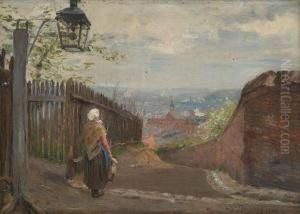Charles Theunissen Paintings
Charles Theunissen was a Belgian sculptor born in 1820. Emerging from a period rich in European art and culture, Theunissen's works are often overshadowed by the grandeur of his contemporaries, yet they possess a distinct charm and technical prowess that merit recognition. His life spanned the 19th century, a time of significant political, social, and technological change, which inevitably influenced the artistic expressions of the era. Despite the lack of widespread fame, Theunissen's contributions to Belgian sculpture and his dedication to his craft make him a figure of interest in the study of European art history.
Theunissen's body of work primarily consists of sculptures that reflect the Romantic spirit of his time, often imbued with a sense of nationalism and an appreciation for the natural world. His style, while rooted in the traditional, also occasionally ventured into the more experimental realms, indicating his willingness to explore the boundaries of sculpture as a medium. Throughout his career, Theunissen received various commissions for public monuments, a testament to his skill and the respect he garnered within certain circles.
Despite his death in 1898, Charles Theunissen's legacy lives on through his sculptures, many of which continue to adorn public spaces and galleries. His contributions, though not as widely celebrated as those of some of his peers, remain significant in the annals of Belgian art history. Through his works, Theunissen offers a glimpse into the 19th-century Belgian artistic landscape, reflecting the cultural and historical currents of his time.
